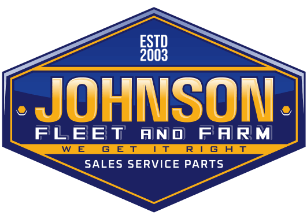How to Get Your Land and Equipment Ready for Spring
 Before you can embrace spring, you'll need to undo the effects of winter on your land and your agricultural equipment. The cold temperatures can be harsh on your soil and the weeks your equipment spent in storage can take their toll. Follow the below strategies to get your land and farm equipment optimized for a bountiful harvest. If you have questions or want to explore farm equipment for sale, including tractors, visit Johnson Fleet and Farm. Our dealership is located in Yulee and Fernandina Beach, Florida, and Homerville, Georgia, so stop by your nearest location today!
Before you can embrace spring, you'll need to undo the effects of winter on your land and your agricultural equipment. The cold temperatures can be harsh on your soil and the weeks your equipment spent in storage can take their toll. Follow the below strategies to get your land and farm equipment optimized for a bountiful harvest. If you have questions or want to explore farm equipment for sale, including tractors, visit Johnson Fleet and Farm. Our dealership is located in Yulee and Fernandina Beach, Florida, and Homerville, Georgia, so stop by your nearest location today!
1. Test Your Soil
Start by figuring out the current state of your soil. The information you gather in this step will help inform later choices you make, such as how to protect your crops and maximize your harvest. Gather up some soil samples for a pH test. This can be done by sending soil samples to a professional lab or doing it yourself with a kit.
2. Inspect Your Farm Equipment
You'll want to check that your agricultural equipment is ready for operation before you actually need to use them. The time spent in storage can leave its mark, so be sure to give all of your equipment a thorough inspection. If the storage time left a layer of gunk on your equipment, wash it off before looking it over. The grime may make it harder to spot issues and can lead to damage if left on your equipment too long.
As for the inspection, look over everything for any possible issues. Then take the equipment for a test drive and check everything from the brakes to the lights. Remember that issues that appear small can easily lead to other problems and more expensive repairs down the road, so it is best to get them addressed as soon as possible.
3. Tackle Any Needed Farm Equipment Maintenance
Some maintenance tasks are best left to the experts, but there are still projects owners can tackle. Add lubrication to the various moving parts of the equipment. Check the fluids for quality and, if they are good, top off any that are low. Inspect the battery to ensure it hadn't drained during storage. Finally, glance at your equipment's owner's manual to ensure there aren't any model-specific tasks needing to be done.
4. Address Any Soil Issues
Your land may not be ready yet for planting. You may need to break up tough soil, get rid of a weed infestation, and so on. Get any soil problems fixed before it comes time to plant your crop.
5. Pick Your Crop
Finally, you will need to decide what you want to grow. Remember to account for various factors, such as the types of crops that grow best in your area and the cost of planting certain types of crops.
Once you select your crop, you will want to pick a compatible fertilizer. Soil needs plenty of nutrients, such as potassium, nitrogen, and phosphorus, to be healthy and support optimized plant growth. Use the right fertilizer and you can increase the chances of a successful harvest.
We hope you found this guide useful! If you want more strategies or want to explore agriculture equipment for sale, visit Johnson Fleet and Farm. We carry a range of ag equipment, including various tractors. Our friendly staff is happy to chat with you and help you find what you need, so stop by and visit our dealership today. We proudly serve those in Jacksonville and St. Augustine, Florida.
